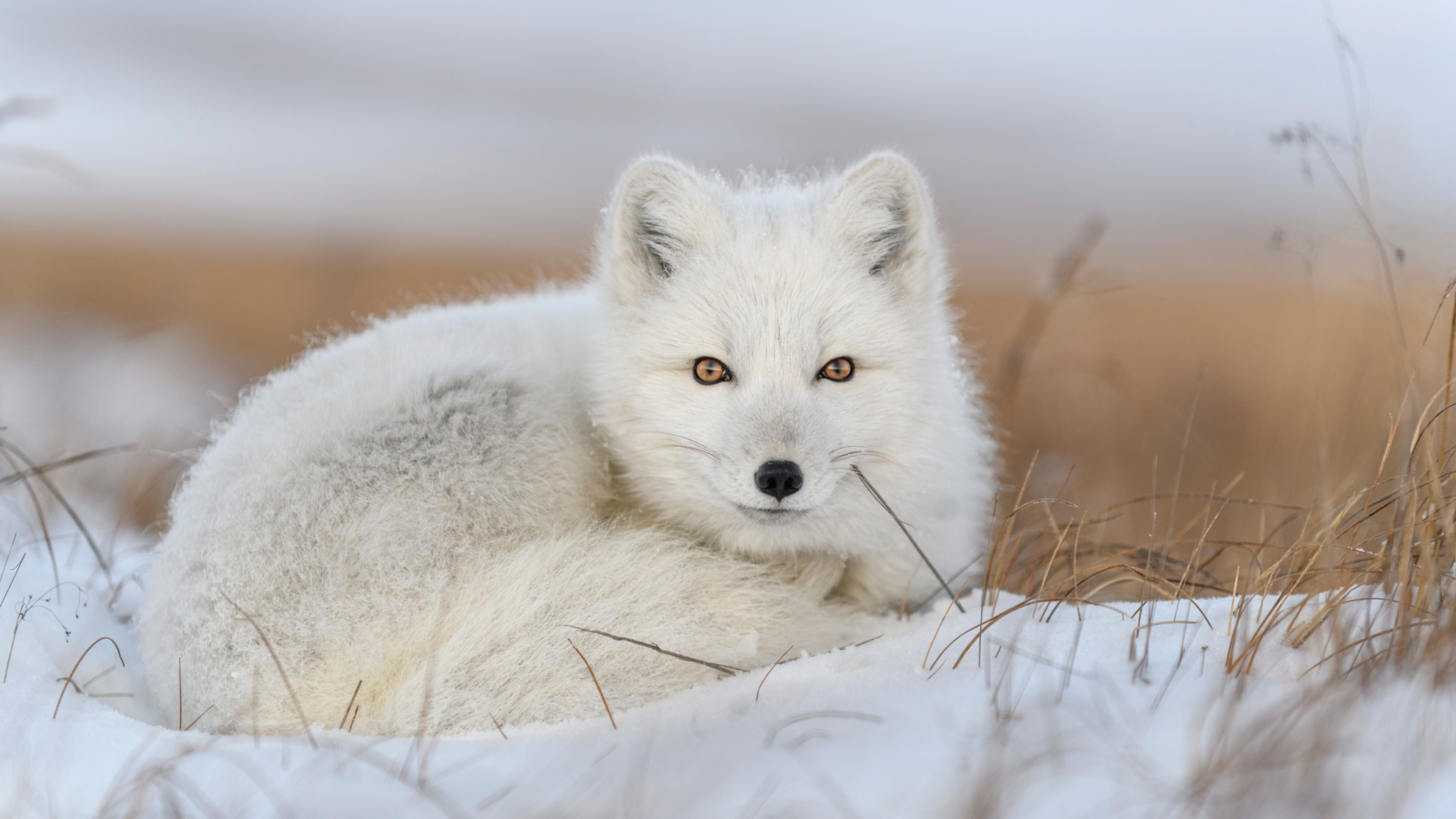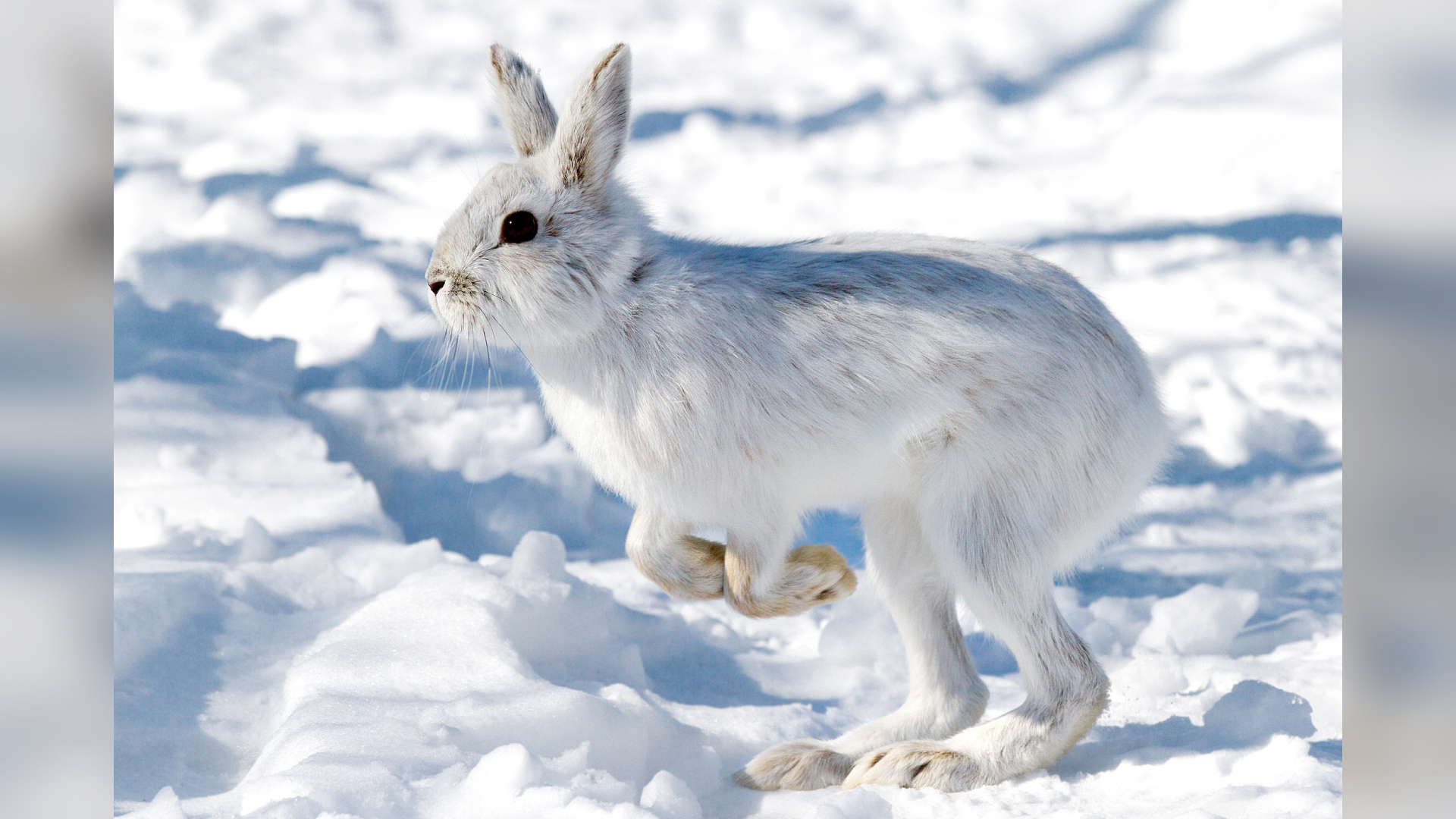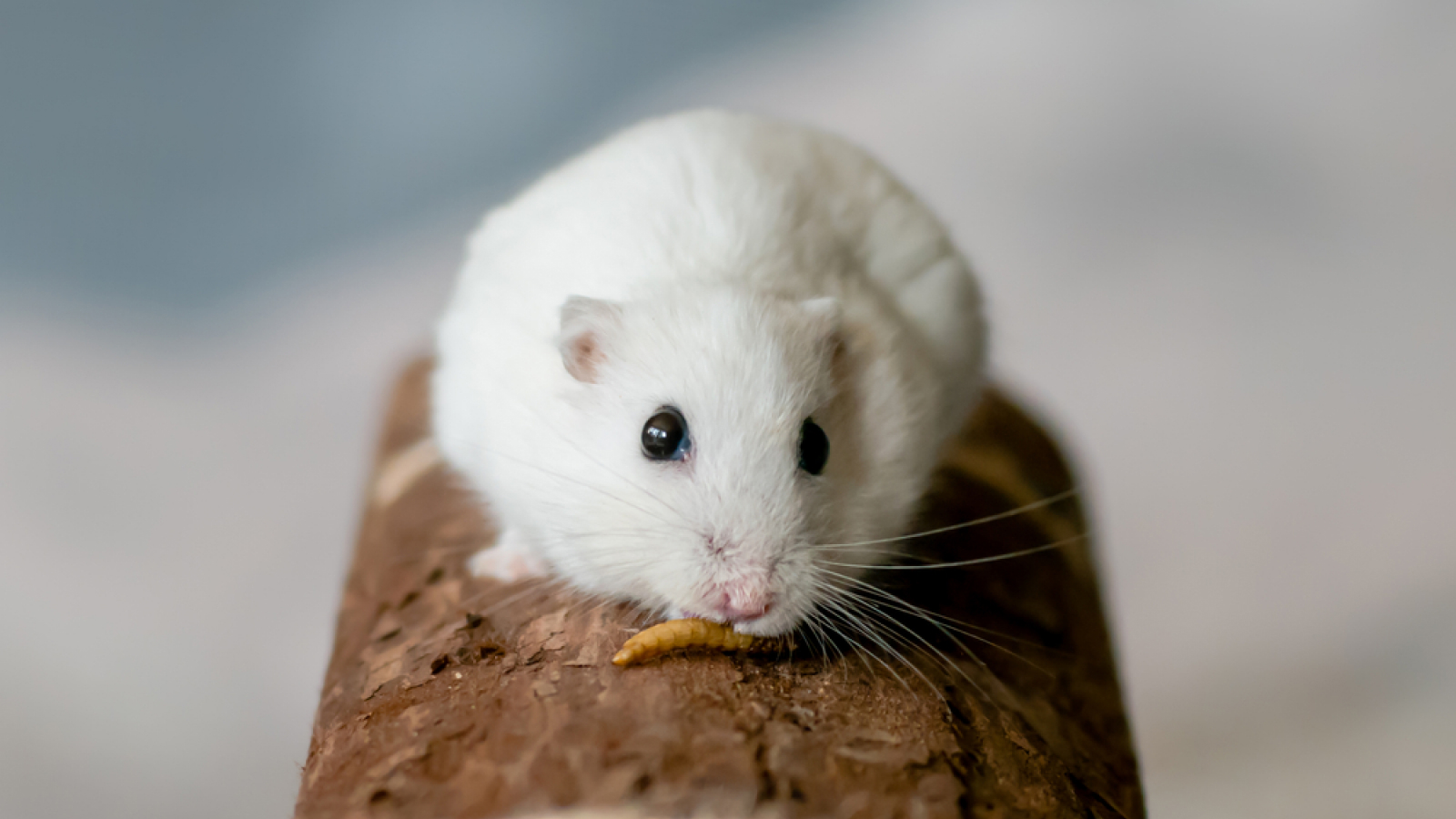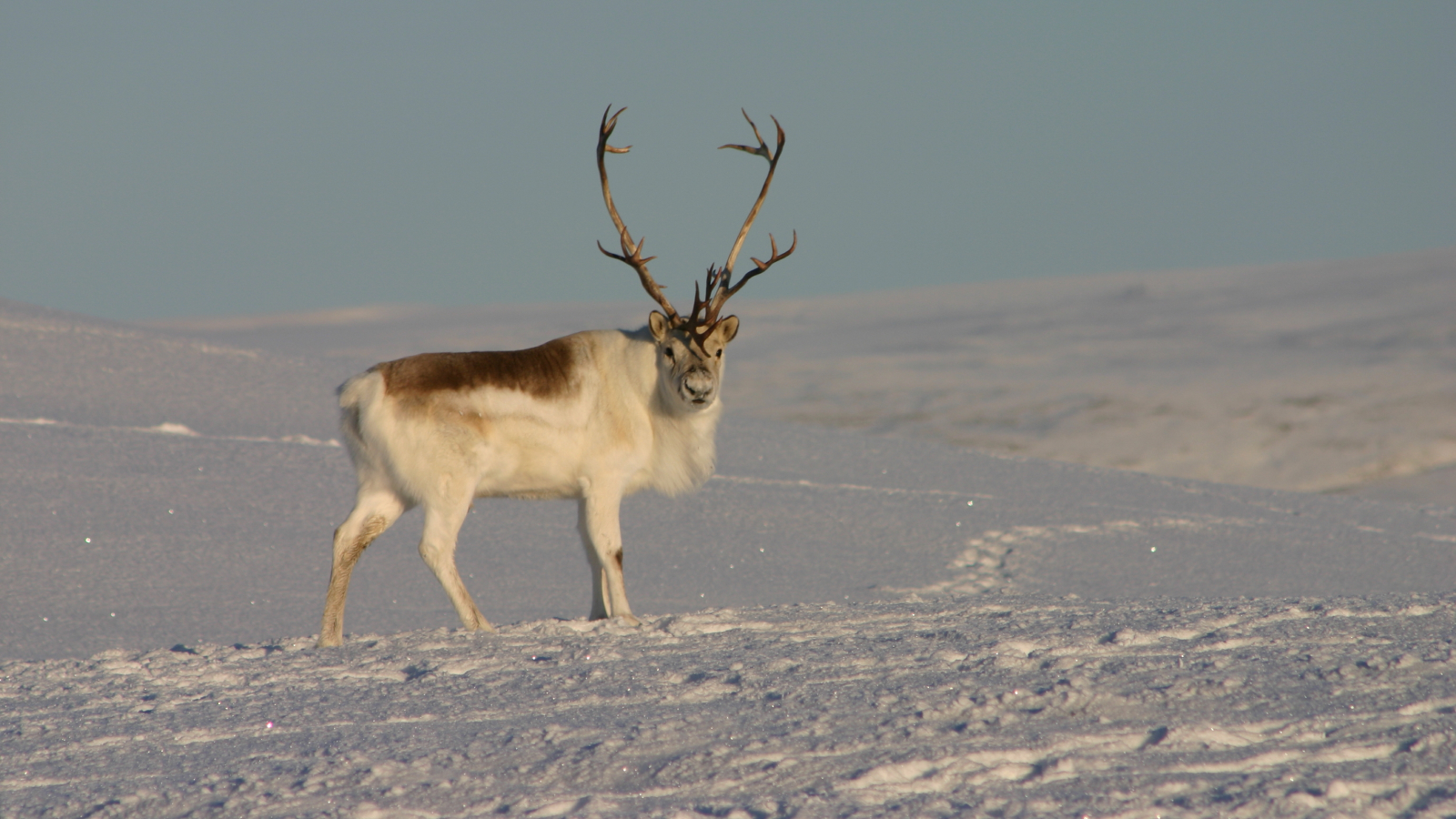6 animals that change color in the winter
These animals ditch their summer colors for white winter coats.
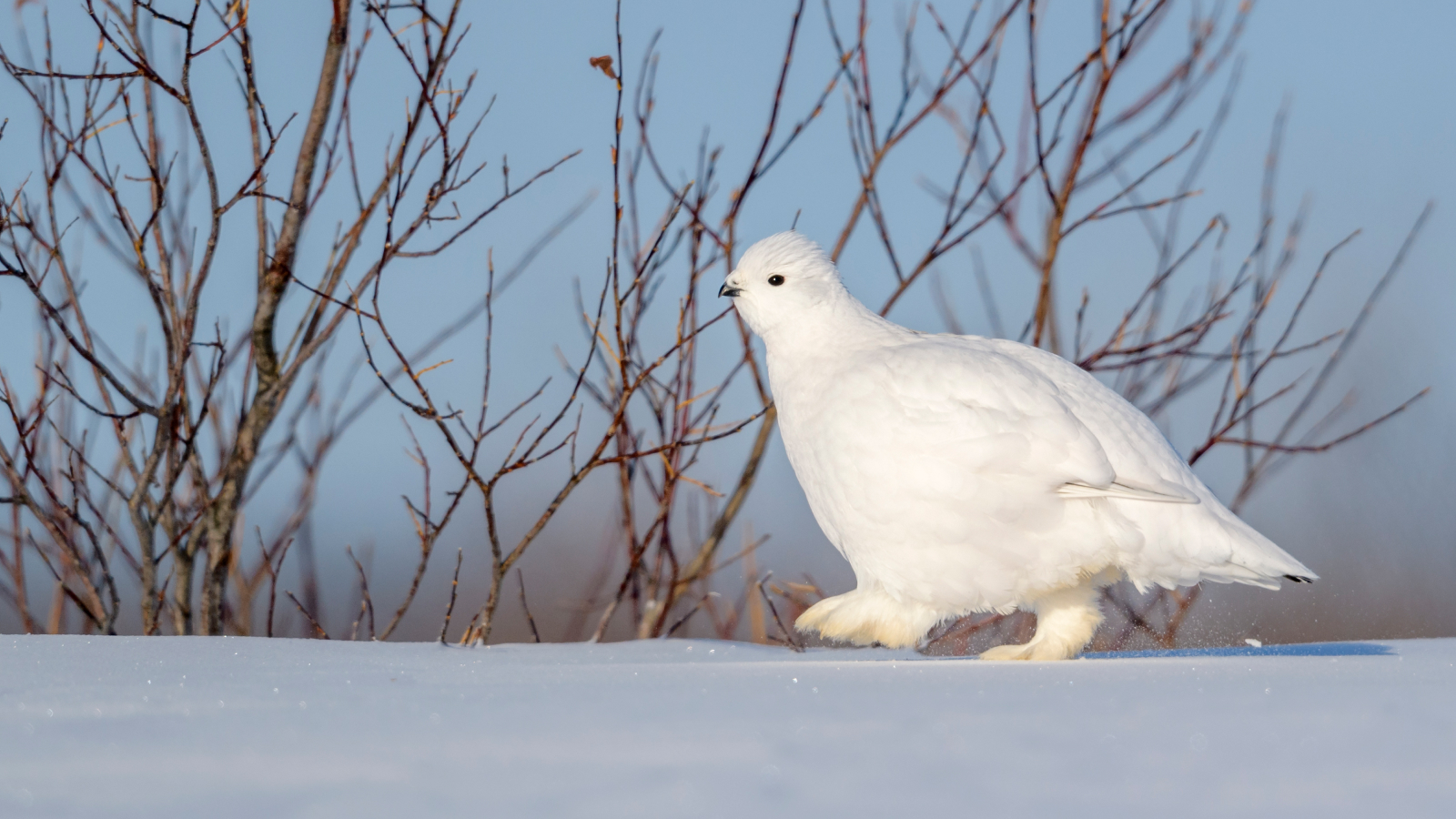
Migration, hibernation and food storage are all responses to seasonal changes. As the days become shorter and the nights get longer, hormone changes trigger an animal's instinct to prepare for winter.
As the snow begins to fall, some animals swap out their summer brown fur for white winter coats. From weasels to caribou, here are six animals that change their appearance with the seasons.
Weasels
Weasels are active woodland predators that squeeze into the underground burrows of voles and mice, which constitute up to 80% of their diet. Although weasels are found all over the world, only those in the Northern Hemisphere change color.
Three weasel species change color: the least weasel (Mustela nivalis), the long-tailed weasel (Mustela frenata) and the short-tailed weasel (Mustela erminea). The short-tailed weasel, or stoat, starts off with a summer coat of reddish-brown fur with a white underbelly. When winter comes, the dark fur molts and is replaced by white fur. This starts on the animal's belly, chest and throat and gradually spreads toward its back, leaving a black tip at the end of its tail.
These white weasels blend into their snowy backgrounds, creating the perfect camouflage for sneaking up on prey and hiding from predators such as owls, hawks and foxes.
Arctic foxes
Arctic foxes (Vulpes lagopus) live in some of the harshest places on Earth, in the Arctic tundra, where temperatures are extremely low and the summer is very short. In the summer, the Arctic fox has short, thin, light-gray fur that gradually changes into thick, white fur across its whole body and blends in with the tundra's snow. Much like weasels, they depend on their fur for camouflage but also for insulation during the cold season.
Related: Legendary 'cat-fox' could be a new subspecies
Get the world’s most fascinating discoveries delivered straight to your inbox.
Hares
Of the 40 known species of hare, only six change color in the winter. These include the snowshoe hare (Lepus americanus), the Arctic hare (Lepus arcticus) and the mountain hare (Lepus timidus).
Snowshoe hares are named after their large, furry feet that support their weight on top of thick snow. They live in Canada and the northernmost part of the U.S. In spring and summer, they sport dark-gray-and-brown fur coats that make them invisible against a background of dirt and rocks. When the days become shorter, their fur coats gradually turn white for the winter.
Ptarmigans
Ptarmigans are small birds that live in regions from the Arctic tundra to the boreal forests of North America and Eurasia. Three species change color in the winter: the rock ptarmigan (Lagopus muta), the white-tailed ptarmigan (Lagopus leucurus) and the willow ptarmigan (Lagopus lagopus).
All three species have feathered feet that help them walk on snow. This dark-brown plumage gradually turns white to camouflage the birds in the snow. However, male rock ptarmigans keep their white coats to court females until the breeding season ends in midsummer. To remain hidden from predators, the males may take regular dust baths that cover their white feathers.
Russian dwarf hamsters
In the grassy fields of Kazakhstan, northern China and Russia lives a small hamster that's known mostly for being a household pet.
Russian dwarf hamsters (Phodopus sungorus) are rounded hamsters that can be brown and gray with light underbellies. Some have a distinct dorsal stripe running from their head to the back of their tail.
They are known as "winter white" hamsters because their thin, dark fur is replaced by thick, white fur when the temperatures drop and the days shorten. In captivity, their fur coats rarely change, likely because the artificial light used in enclosures doesn't mimic the shorter winter days.
Peary caribou
Peary caribou (Rangifer tarandus pearyi) are a species of caribou found only in the Canadian Arctic archipelago. They tread through deep water between the small islands and graze on grass and moss, using their wide, shovel-like hooves to forage in the snow.
They have two layers of hair: a thick base layer and another layer of longer, finer hairs called guard hairs. Their long outer hairs are hollow to trap warm air inside for insulation and protect the thick hair underneath from abrasion. Peary caribou are covered mainly in white fur but have slate-gray backs that turn a fair brown in the summer. During winter, their fur may turn completely white.

Elise studied marine biology at the University of Portsmouth in the U.K. She has worked as a freelance journalist focusing on the aquatic realm.



